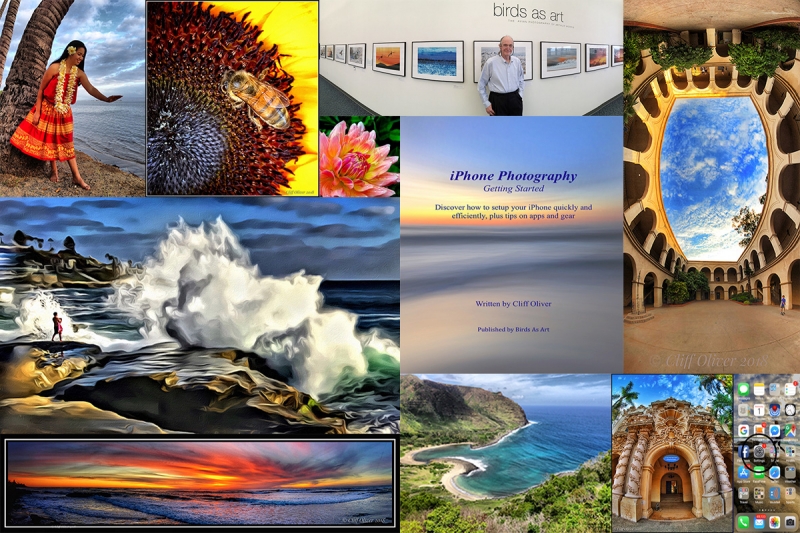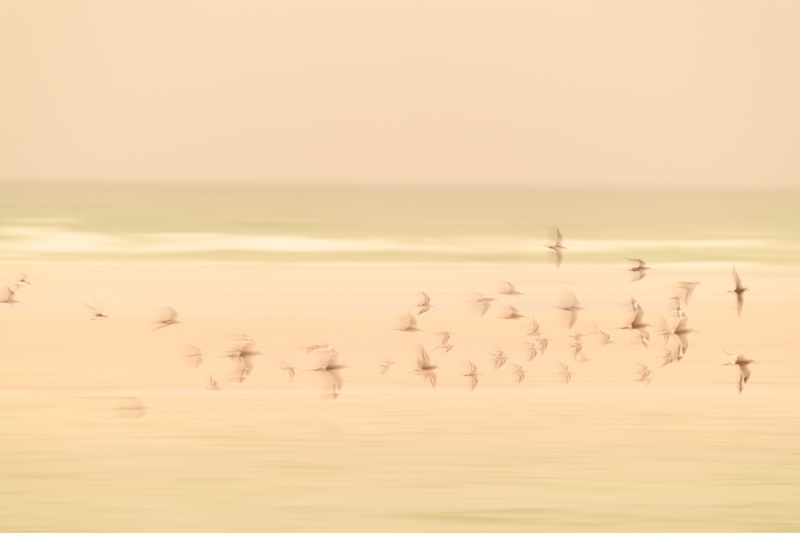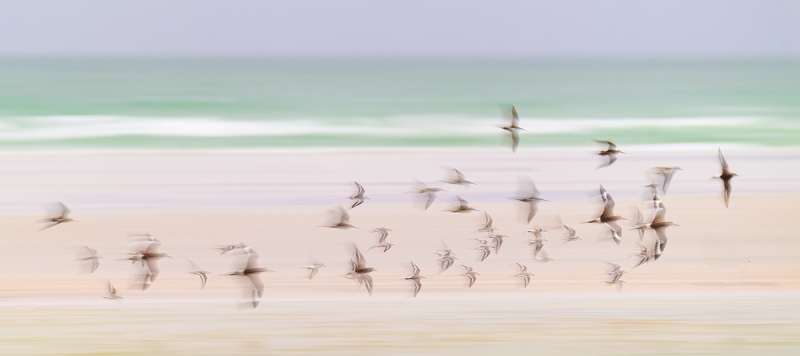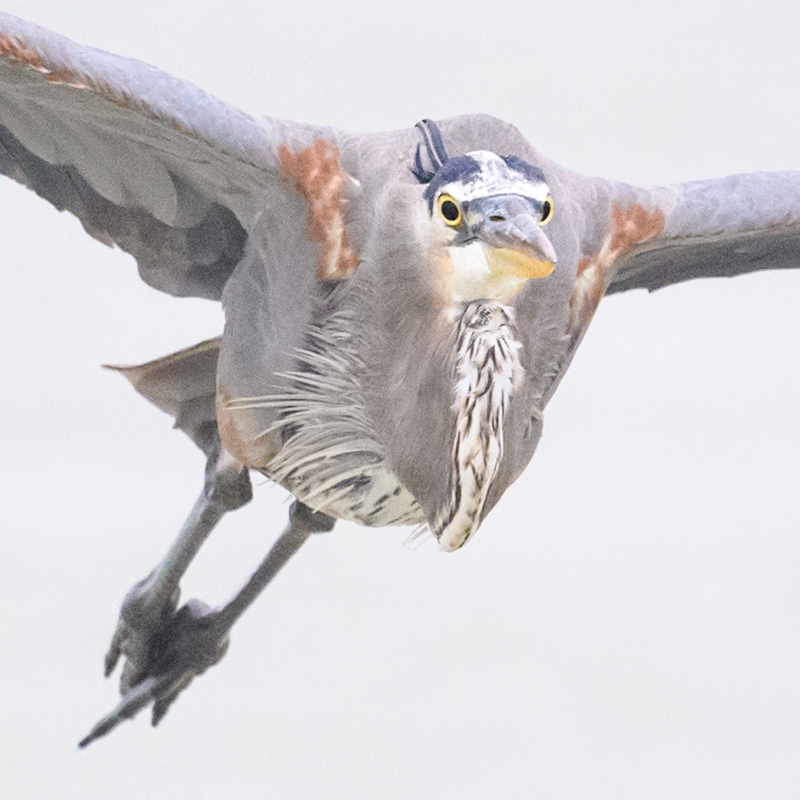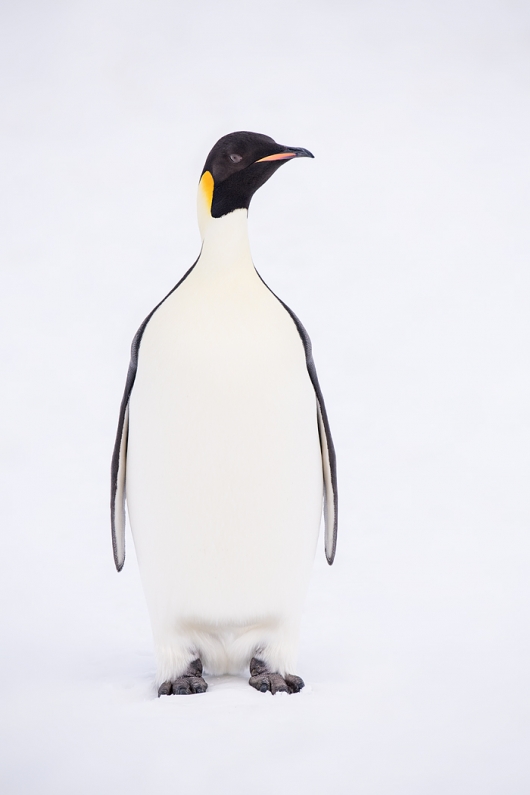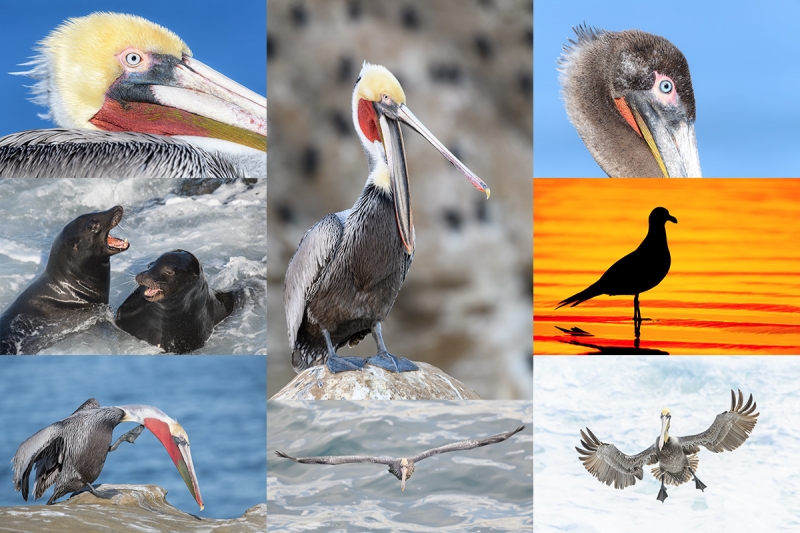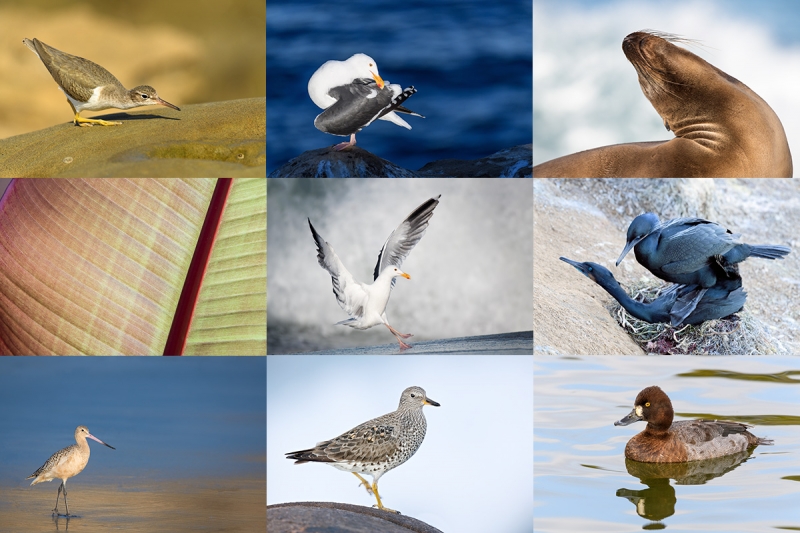December 12th, 2018 Stuff
We enjoyed a fine last morning on the Early Winter (it felt like it at times!) Fort DeSoto IPT. We had two minutes of sweet light on some sandbar White Pelicans, more chances to practice tern and gull blurs, and a nice flock of Laughing Gulls and Sandwich and Forster’s Terns. We did the flock wide with lots of different focal lengths and from different perspectives and different backgrounds. Then we approached carefully and finished off by isolating single birds on clean sand backgrounds.
Thanks a stack to Deidre Bryan, Narayanan Mangalath, and multiple IPT veteran Dietmar Haenchen for joining me. We had great fun, great food, and everyone learned a ton including and especially me.
I still need 3 or four folks for the Galapagos trip. If you would like to explore the possibilities, give me a call on my cell on Wednesday or Thursday at 863-221-2372.
This Just In!
There is an amazing new listing on the Used Gear Page here. I will run it in tomorrow’s post if nobody sees and buys it before then …
Canon EF 500mm f/4L IS II USM Lens/with Extras!
BAA Record-low Price
BAA IPTs
- The 2018 Fort DeSoto Early Winter IPT/Thursday December 7 through the morning session on Monday December 10, 2018: 3 1/2 DAYS: $1549. Limit 8/Openings: 5.
- Falklands Land-based IPT DEC 22, 2018 thru JAN 5, 2019/Two Weeks: Sold out.
- 2019 San Diego 4 1/2-DAY BIRDS AS ART Instructional Photo-Tour (IPT) SUN JAN 20, 2019 thru and including the morning session on THURS JAN 24: 4 1/2 days: $2099. (Limit: 10/Openings: 4) Introductory Meet and Greet at 7:00pm on the evening before the IPT begins: THURS, 6 DEC.
- The 2019 Hooptie Deux/Roseate Spoonbill Boat 3 1/2 DAY IPT — FEB 16 thru 19, 2019: $2599.00. Limit: 5 photographers/Openings: 2.
- The New, Expanded 2019 UK Puffins, Gannets, & Red Kites IPT. Thursday June 27 (from EDI) through Tuesday, July 9, 2019 (on the ground; fly home on Wednesday July 10.): $9,999. Limit 10 photographers — needs four to run. Co-leader: Peter Kes.
- The GALAPAGOS Photo Cruise of a Lifetime IPT/The Complete Galapagos Photographic Experience. July 23 to August 6, 2019 on the boat. 13 FULL and two half-days of photography: $14,499. Limit: 12 photographers/Openings: 4.
BIRDS AS ART
BIRDS AS ART is registered in the U.S. Patent and Trademark Office.
|
|
The iPhone Photography e-Guide
If you missed the long-awaited announcement yesterday, click here to learn about Cliff Oliver’s great new iPhone e-Guide. To order your copy of the The iPhone Photography e-Guide, please click here. The PDF is sent link by e-mail for downloading: the file is relatively huge at 216 MB.
|
Selling Your Used Photo Gear Through BIRDS AS ART
Selling your used (or like-new) photo gear through the BAA Blog is a great idea. We charge only a 5% commission. One of the more popular used gear for sale sites charged a minimum of 20%. Plus assorted fees! Yikes. They went out of business. And e-Bay fees are now up to 13%. The minimum item price here is $500 (or less for a $25 fee). If you are interested please scroll down here or shoot us an e-mail with the words Items for Sale Info Request cut and pasted into the Subject line :). Stuff that is priced fairly — I offer pricing advice to those who agree to the terms — usually sells in no time flat. Over the past year, we have sold many dozens of items. Do know that prices on some items like the EOS-1D Mark IV, the old Canon 100-400, the old 500mm, the EOS-7D and 7D Mark II and the original 400mm DO lens have been dropping steadily. You can always see the current listings by clicking here or on the Used Photo Gear tab on the orange-yellow menu bar near the top of each blog post page.
Money Saving Reminder
If you need a hot photo item that is out of stock at B&H, would enjoy free overnight shipping, and would like a $50 discount on your first purchase, click here to order and enter the coupon code BIRDSASART at checkout. If you are looking to strike a deal on Canon or Nikon gear (including the big telephotos) or on a multiple item order, contact Steve Elkins via e-mail or on his cell at (479) 381-2592 (Eastern time) and be sure to mention your BIRDSASART coupon code and use it for your online order. Steve currently has several D850s in stock along with a Nikon 600mm f/4 VR. He is taking pre-orders for the new Nikon 500 P and the Nikon Z6 mirrorless camera body.
Gear Questions and Advice
Too many folks attending BAA IPTs and dozens of photographers whom I see in the field and on BPN, are–out of ignorance–using the wrong gear especially when it comes to tripods and more especially, tripod heads… Please know that I am always glad to answer your gear questions via e-mail. Those questions might deal with systems, camera bodies, accessories, and/or lens choices and decisions.
The 2018 B&H/BAA Bird Photography Holiday Contest!
Thanks to the generosity of the great folks at B&H, I am proud to announce the first-ever B&H/BAA Bird Photography Holiday Contest. The rules are simple:
1-Anyone can enter one or two of their favorite avian images that were created in 2018. As below, each image must be sent in a separate e-mail.
2-Image clean-up and repair is permitted.
3-Send you JPEGs in two separate e-mails only by clicking on this link: Contest Entry e-mail.
4-Please size your properly sharpened JPEGs as follows: 1200 high or wide less than 600 kb.
5-If you do not follow the instructions above to the letter your images will not be judged and you will not receive any notification.
6-There is one judge and you can guess who it is.
7-Here are the five prizes:
1st place: a $100 B&H gift certificate
2nd through 4th place: a $50 B&H gift certificate
All prizes will be awarded.
8- Entries my be submitted from now until January 16, 2019. Happy New Year! Please remember to do your holiday shopping at B&H using a BAA affiliate link or by clicking here or on the banner just below.
Good luck.
|
|
|
This image was created with on the morning of Day 3 of the Early Winter DeSoto IPT with the hand held Nikon AF-S NIKKOR 500mm f/5.6E PF ED VR lens and the rugged, blazingly fast Nikon D5 with Dual XQD Slots.AUTO ISO at ? Matrix metering plus 2 1/3 stops: 1/500 sec. at f/5.6 in S Mode (Shutter Priority — Tv mode in Canon). Auto 1 WB at 10:11am on a cloudy/very dark rainy morning.
Center Group (grp) AF/Shutter button AF as framed was active at the moment of exposure. The array was centered squarely on the bird’s face with the lower AF point on its neck. I kept my 500 PF/D5 on my shoulder via an RS-7 Curve Breathe Strap. Click on the image to see a larger version.
Focus peaking AF Fine-tune: -1. See the Nikon AF Fine-tune e-Guide here.
Incoming Great Blue Heron
|
What’s the ISO?
In the What’s the ISO blog post here I wrote:
After reading the account above and considering both the enlarged full frame image and the tight crop above, please leave a comment and take a guess at the ISO that the camera set for today’s featured image. (Click on the link to see the tightly cropped image.)
The educated guesses ran from ISO 1,600 to ISO 10,000. ISO 10,000 is the correct answer. I think that the D5 handled the very high ISO quite nicely. It is not often that folks think that ISO 10,000 images were created at ISO 1,600.
|
|
|
This was created on the Early Winter DeSoto IPT with the hand held Nikon AF-S NIKKOR 80-400mm f/4.5-5.6G ED VR lens at 400mm and the rugged, blazingly fast Nikon D5 with Dual XQD Slots.AUTO ISO at 640. Matrix metering plus 2 stops: 1/25 sec. at f/5.6 in S Mode(Shutter Priority — Tv mode in Canon). Auto 1 WB at 7:03am on a cloudy/very dark morning. See more below on the sickly yellow light …
One below the center Group (grp) AF/Shutter button AF as originally framed was active at the moment of exposure. I kept the array on the flock and it held focus nicely. I had the 80-400 on my shoulder via an RS-7 Curve Breathe Strap. Click on the image to see a larger version.
Focus peaking AF Fine-tune: +4. See the Nikon AF Fine-tune e-Guide here.
Shorebird Pastel flock blur sickly yellow original
|
The Sickly Yellow Original …
As the sun rose behind some heavy cloud cover on Sunday morning the light became a sickly yellow (above) that often indicates that a big storm is coming. It came but we had fun anyway photographing tame birds with the wind and the stinging cold rain at our backs. You can get an idea of the color of the light in the JPEG above that accurately represents the original capture. AUTO 1 ISO had set the color temperature at 3150 Kelvin. I thought that the image had potential …
|
|
|
This image was created on the morning of Day 3 of the Early Winter DeSoto IPT with the hand held Nikon AF-S NIKKOR 80-400mm f/4.5-5.6G ED VR lens at 400mm and the rugged, blazingly fast Nikon D5 with Dual XQD Slots.AUTO ISO at 640. Matrix metering plus 2 stops: 1/25 sec. at f/5.6 in S Mode(Shutter Priority — Tv mode in Canon). Auto 1 WB at 7:03am on a cloudy/very dark morning.
One below the center Group (grp) AF/Shutter button AF as originally framed was active at the moment of exposure. I kept the array on the flock and it held focus nicely. I had the 80-400 on my shoulder via an RS-7 Curve Breathe Strap. Click on the image to see a larger version.
Focus peaking AF Fine-tune: +4. See the Nikon AF Fine-tune e-Guide here.
Image A: Shorebird Pastel flock blur pano
|
Miraculous Color Temperature Save
I worked this image with the group during a Photoshop session. The main component of success was simply lowering the color temperature from 3150 K to 2500 K. That move brought lots of oohs an ahs. I adjusted the additional sliders to taste and brought the TIFF into Photoshop. There I cropped to a pano, applied a 30% layer of Image > Auto Contrast (as taught to me by Denise Ippolito), and used the Patch Tool to eliminate two birds. All of the above plus tons more in Digital Basics II.
Image A above was the first version that I created. I lost the optimized file 🙁 but did save the JPEG. When I re-did the image from scratch, I created the different version below.
The Lesson
It is amazing how much information there is in a properly exposed RAW file …
|
|
|
This, a second version of the image above, was (of course) created on the morning of Day 3 of the Early Winter DeSoto IPT with the hand held Nikon AF-S NIKKOR 80-400mm f/4.5-5.6G ED VR lens at 400mm and the rugged, blazingly fast Nikon D5 with Dual XQD Slots.AUTO ISO at 640. Matrix metering plus 2 stops: 1/25 sec. at f/5.6 in S Mode(Shutter Priority — Tv mode in Canon). Auto 1 WB at 7:03am on a cloudy/very dark morning.
One below the center Group (grp) AF/Shutter button AF as originally framed was active at the moment of exposure. I kept the array on the flock and it held focus nicely. I had the 80-400 on my shoulder via an RS-7 Curve Breathe Strap. Click on the image to see a larger version.
Focus peaking AF Fine-tune: +4. See the Nikon AF Fine-tune e-Guide here.
Image B: Shorebird Pastel flock blur taller pano
|
The Taller Pano
Please leave a comment and let us know which of today’s two featured images you prefer, Image A, the pano version, or Image B, the taller pano. Do you see any differences besides the crop? IAC, please let us know why you made your choice.
|
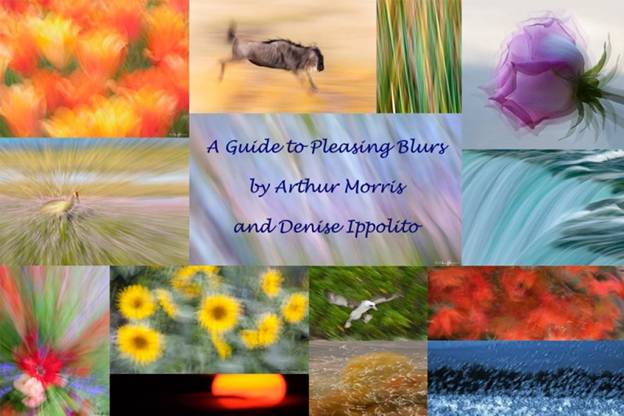
|
|
Learn the secrets of creating contest winning images in our “A Guide to Pleasing Blurs.”
|
A Guide to Pleasing Blurs
In our A Guide to Pleasing Blurs by Denise Ippolito and yours truly, we discuss just about every technique ever used mankind to create pleasingly blurred image. Ninety-nine point nine percent of pleasing blurs are not happy accidents. You can learn pretty much everything that there is to know about creating them in this instructive, well written, easy to follow guide.
Help Support the Blog
Please help support my efforts here on the blog by remembering to click on the logo link above each time that you shop Amazon. That would be greatly appreciated. There is no problem using your Prime account; just click on the link and log into your Prime account. With love, artie
If In Doubt …
If in doubt about using the BAA B&H affiliate link correctly, you can always start your search by clicking here. Please note that the tracking is invisible. Web orders only. Please, however, remember to shoot me your receipt via e-mail.




Please Remember to use my Affiliate Links and to Visit the New BAA Online Store 🙂
To show your appreciation for my continuing efforts here, we ask, as always, that you get in the habit of using my B&H affiliate links on the right side of the blog for all of your photo and electronics purchases. Please check the availability of all photographic accessories in the New BIRDS AS ART Online Store, especially the Mongoose M3.6 tripod head, Wimberley lens plates, Delkin flash cards and accessories, and LensCoat stuff.
As always, we sell only what I have used, have tested, and can depend on. We will not sell you junk. We know what you need to make creating great images easy and fun. And please remember that I am always glad to answer your gear questions via e-mail.
I would of course appreciate your using our B&H affiliate links for all of your major gear, video, and electronic purchases. For the photographic stuff mentioned in the paragraph above, and for everything else in the new store, we, meaning BAA, would of course greatly appreciate your business. Here is a huge thank you to the many who have been using our links on a regular basis and those who will be visiting the New BIRDS AS ART Online Store as well.
Facebook
Be sure to like and follow BAA on Facebook by clicking on the logo link upper right. Tanks a stack.
Typos
In all blog posts and Bulletins, feel free to e-mail or to leave a comment regarding any typos or errors. Just be right :).
December 10th, 2018 Stuff
It was cloudy dark and very windy on Sunday morning. We started out with some neat pleasing blur opportunities and then headed to my favorite morning backup location. The birds were right where I expected them. As it had started to spit cold rain pretty good we made sure to work with our back to the wind to keep our cameras dry. We all had rain tops. In the car. After about an hour we were were all chilled to the bone so we headed back early and spent about four hours micro-adjusting. The gang ordered in pizza while I had tuna with a few bites of crust with great tomato sauce on it.
After Instructor Nap Time we drove back to DeSoto and despite the cloudy conditions had a fabulous afternoon with a flock of tame shorebirds being the highlight until we started back to the cars and encountered a mega feeding spree close to the shore with both Brown and White Pelicans and several dolphins chasing and herding the baitfish. We made it back to the condo that Narayanan and I are sharing at about 6pm and did 90 minutes of ACR and Photoshop instruction. We are planning a short early morning session for Monday as Narayanan and Dietmar needs to be headed home for their mid-afternoon flights. Deidre Bryan who will be driving back home to Tifton, Georgia, nick-named me Grumpy artie-Bob. 🙂
So on the first day we had perfect weather and few birds and on the last day in horrible conditions with tons of birds And we killed. Go figger.
The iPhone Photography e-Guide Update
Thanks to the dozens of folks who order the i-Phone e-Guide yesterday. Please understand that those who purchased the new guide after lunch on Friday will receive their download links on Monday morning. For those who have already received their guides we would love to receive your feed back via e-mail. In addition, we would be glad to answer your iPhone questions, also via e-mail.
|
|
The iPhone Photography e-Guide
If you missed the long-awaited announcement yesterday, click here to learn about Cliff Oliver’s great new iPhone e-Guide. To order your copy of the The iPhone Photography e-Guide, please click here. The PDF is sent link by e-mail for downloading: the file is relatively huge at 216 MB.
|
The 2018 B&H/BAA Bird Photography Holiday Contest!
Thanks to the generosity of the great folks at B&H, I am proud to announce the first-ever B&H/BAA Bird Photography Holiday Contest. The rules are simple:
1-Anyone can enter one or two of their favorite avian images that were created in 2018. As below, each image must be sent in a separate e-mail.
2-Image clean-up and repair is permitted.
3-Send you JPEGs in two separate e-mails only by clicking on this link: Contest Entry e-mail.
4-Please size your properly sharpened JPEGs as follows: 1200 high or wide less than 600 kb.
5-If you do not follow the instructions above to the letter your images will not be judged and you will not receive any notification.
6-There is one judge and you can guess who it is.
7-Here are the five prizes:
1st place: a $100 B&H gift certificate
2nd through 4th place: a $50 B&H gift certificate
All prizes will be awarded.
8- Entries my be submitted from now until January 16, 2019. Happy New Year! Please remember to do your holiday shopping at B&H using a BAA affiliate link or by clicking here or on the banner just below.
Good luck.
BAA IPTs
- The 2018 Fort DeSoto Early Winter IPT/Thursday December 7 through the morning session on Monday December 10, 2018: 3 1/2 DAYS: $1549. Limit 8/Openings: 5.
- Falklands Land-based IPT DEC 22, 2018 thru JAN 5, 2019/Two Weeks: Sold out.
- 2019 San Diego 4 1/2-DAY BIRDS AS ART Instructional Photo-Tour (IPT) SUN JAN 20, 2019 thru and including the morning session on THURS JAN 24: 4 1/2 days: $2099. (Limit: 10/Openings: 4) Introductory Meet and Greet at 7:00pm on the evening before the IPT begins: THURS, 6 DEC.
- The 2019 Hooptie Deux/Roseate Spoonbill Boat 3 1/2 DAY IPT — FEB 16 thru 19, 2019: $2599.00. Limit: 5 photographers/Openings: 2.
- The New, Expanded 2019 UK Puffins, Gannets, & Red Kites IPT. Thursday June 27 (from EDI) through Tuesday, July 9, 2019 (on the ground; fly home on Wednesday July 10.): $9,999. Limit 10 photographers — needs four to run. Co-leader: Peter Kes.
- The GALAPAGOS Photo Cruise of a Lifetime IPT/The Complete Galapagos Photographic Experience. July 23 to August 6, 2019 on the boat. 13 FULL and two half-days of photography: $14,499. Limit: 12 photographers/Openings: 4.
BIRDS AS ART
BIRDS AS ART is registered in the U.S. Patent and Trademark Office.
Selling Your Used Photo Gear Through BIRDS AS ART
Selling your used (or like-new) photo gear through the BAA Blog is a great idea. We charge only a 5% commission. One of the more popular used gear for sale sites charged a minimum of 20%. Plus assorted fees! Yikes. They went out of business. And e-Bay fees are now up to 13%. The minimum item price here is $500 (or less for a $25 fee). If you are interested please scroll down here or shoot us an e-mail with the words Items for Sale Info Request cut and pasted into the Subject line :). Stuff that is priced fairly — I offer pricing advice to those who agree to the terms — usually sells in no time flat. Over the past year, we have sold many dozens of items. Do know that prices on some items like the EOS-1D Mark IV, the old Canon 100-400, the old 500mm, the EOS-7D and 7D Mark II and the original 400mm DO lens have been dropping steadily. You can always see the current listings by clicking here or on the Used Photo Gear tab on the orange-yellow menu bar near the top of each blog post page.
Money Saving Reminder
If you need a hot photo item that is out of stock at B&H, would enjoy free overnight shipping, and would like a $50 discount on your first purchase, click here to order and enter the coupon code BIRDSASART at checkout. If you are looking to strike a deal on Canon or Nikon gear (including the big telephotos) or on a multiple item order, contact Steve Elkins via e-mail or on his cell at (479) 381-2592 (Eastern time) and be sure to mention your BIRDSASART coupon code and use it for your online order. Steve currently has several D850s in stock along with a Nikon 600mm f/4 VR. He is taking pre-orders for the new Nikon 500 P and the Nikon Z6 mirrorless camera body.
Gear Questions and Advice
Too many folks attending BAA IPTs and dozens of photographers whom I see in the field and on BPN, are–out of ignorance–using the wrong gear especially when it comes to tripods and more especially, tripod heads… Please know that I am always glad to answer your gear questions via e-mail. Those questions might deal with systems, camera bodies, accessories, and/or lens choices and decisions.
|
|
|
This image was created with on the morning of Day 3 of the Early Winter DeSoto IPT with the hand held Nikon AF-S NIKKOR 500mm f/5.6E PF ED VR lens and the rugged, blazingly fast Nikon D5 with Dual XQD Slots.AUTO ISO at ? Matrix metering plus 2 1/3 stops: 1/500 sec. at f/5.6 in S Mode(Shutter Priority — Tv mode in Canon). Auto 1 WB at 10:11am on a cloudy/very dark rainy morning.
Center Group (grp) AF/Shutter button AF as framed was active at the moment of exposure. The array was centered squarely on the bird’s face with the lower AF point on its neck. I kept my 500 PF/D5 on my shoulder via an RS-7 Curve Breathe Strap. Click on the image to see a larger version.
Focus peaking AF Fine-tune: -1. See the Nikon AF Fine-tune e-Guide here.
Incoming Great Blue Heron
|
The Situation
We were photographing terns and gull and Snowy Egrets that were hunkered down a bit out of the wind. When it is windy, birds are usually reluctant to fly and will often allow very close approach. I had seen a Great Blue Heron near Battery Bigelow and when I noticed it flying towards us, I screamed it out to the group. Working in shutter priority mode in dark conditions is a great option as you can set a slow shutter speed for blurs or a faster shutter speed for sharp flight and action images; you do need to dial in the correct EC for a given situation and the camera will set the correspondingly correct ISO. If you choose to work in Manual mode in such situations you will have to spin a lot more dials as you will always need to change both your shutter speed and the ISO value, often significantly.
Note that most good bird photographers advise using shutter speeds of at least 1/1600 to 1/3200 second for flight photography. At times, I opt to go as low as 1/500 second in order to avoid insanely high ISOs and am often able to produce sharp images. Today’s featured image with the 500 PF/D5 combination was one of a seven image burst. The first frame was a bit soft, the next six were razor sharp on the eye. I enjoyed the fast frame rate of the D5.
|
|
Unsharpened tight crop of Incoming Great Blue Heron
|
What’s the ISO?
After reading the account above and considering both the enlarged full frame image and the tight crop above, please leave a comment and take a guess at the ISO that the camera set for today’s featured image.
Help Support the Blog
Please help support my efforts here on the blog by remembering to click on the logo link above each time that you shop Amazon. That would be greatly appreciated. There is no problem using your Prime account; just click on the link and log into your Prime account. With love, artie
If In Doubt …
If in doubt about using the BAA B&H affiliate link correctly, you can always start your search by clicking here. Please note that the tracking is invisible. Web orders only. Please, however, remember to shoot me your receipt via e-mail.




Please Remember to use my Affiliate Links and to Visit the New BAA Online Store 🙂
To show your appreciation for my continuing efforts here, we ask, as always, that you get in the habit of using my B&H affiliate links on the right side of the blog for all of your photo and electronics purchases. Please check the availability of all photographic accessories in the New BIRDS AS ART Online Store, especially the Mongoose M3.6 tripod head, Wimberley lens plates, Delkin flash cards and accessories, and LensCoat stuff.
As always, we sell only what I have used, have tested, and can depend on. We will not sell you junk. We know what you need to make creating great images easy and fun. And please remember that I am always glad to answer your gear questions via e-mail.
I would of course appreciate your using our B&H affiliate links for all of your major gear, video, and electronic purchases. For the photographic stuff mentioned in the paragraph above, and for everything else in the new store, we, meaning BAA, would of course greatly appreciate your business. Here is a huge thank you to the many who have been using our links on a regular basis and those who will be visiting the New BIRDS AS ART Online Store as well.
Facebook
Be sure to like and follow BAA on Facebook by clicking on the logo link upper right. Tanks a stack.
Typos
In all blog posts and Bulletins, feel free to e-mail or to leave a comment regarding any typos or errors. Just be right :).
December 8th, 2018 Stuff
I began working on this blog post early on Friday morning. I will be walking out the door in five minutes at 6:05am to begin the Early Winter Fort DeSOto IPT. Things are looking decent with the forecast for mostly clear skies and northeast winds. Those are a lot better than northwest winds in the morning. Time will tell.
Conditions at DeSoto were perfect on Friday morning with a stunner of a sunrise and east//northeast winds. There were very few birds. We did find a few pelicans that made perfect teaching subjects. Deidre’s son had messed with her 7D Mark II and it was driving me nuts. We’d set the ISO at 400 and the correct exposure at something like 1/2500 at f/5.6 but the photo would be eight stops over-exposed and the back of the camera was showing 1/125 sec. at f/5.6 at ISO 100. It was driving me nuts. It took me a half hour to lens that her son had set the start button — Deidre uses that for back button focus — to automatically switch to some saved settings.
We did better in the afternoon with a variety of shorebirds to start and then found the big White Pelican flock right where I had predicted that we would. We had some flying in and were hoping for a sunset blast-off. The pelicans failed us but a big flock of Laughing Gulls took off into the color as we were departing. That made for a great end to a so-so day that featured a ton of learned. And best of all, everyone had fun and is getting along great.
The iPhone Photography e-Guide Update
Thanks to the dozens of folks who order the i-Phone e-Guide yesterday. Please understand that those who purchased the new guide after lunch on Friday will receive their download links on Monday morning. For those who have already received their guides we would love to receive your feed back via e-mail. In addition, we would be glad to answer your iPhone questions, also via e-mail.
|
|
The iPhone Photography e-Guide
If you missed the long-awaited announcement yesterday, click here to learn about Cliff Oliver’s great new iPhone e-Guide. To order your copy of the The iPhone Photography e-Guide, please click here. The PDF is sent link by e-mail for downloading: the file is relatively huge at 216 MB.
|
The 2018 B&H/BAA Bird Photography Holiday Contest!
Thanks to the generosity of the great folks at B&H, I am proud to announce the first-ever B&H/BAA Bird Photography Holiday Contest. The rules are simple:
1-Anyone can enter one or two of their favorite avian images that were created in 2018. As below, each image must be sent in a separate e-mail.
2-Image clean-up and repair is permitted.
3-Send you JPEGs in two separate e-mails only by clicking on this link: Contest Entry e-mail.
4-Please size your properly sharpened JPEGs as follows: 1200 high or wide less than 600 kb.
5-If you do not follow the instructions above to the letter your images will not be judged and you will not receive any notification.
6-There is one judge and you can guess who it is.
7-Here are the five prizes:
1st place: a $100 B&H gift certificate
2nd through 4th place: a $50 B&H gift certificate
All prizes will be awarded.
8- Entries my be submitted from now until January 16, 2019. Happy New Year! Please remember to do your holiday shopping at B&H using a BAA affiliate link or by clicking here or on the banner just below.
Good luck.
BAA IPTs
- The 2018 Fort DeSoto Early Winter IPT/Thursday December 7 through the morning session on Monday December 10, 2018: 3 1/2 DAYS: $1549. Limit 8/Openings: 5.
- Falklands Land-based IPT DEC 22, 2018 thru JAN 5, 2019/Two Weeks: Sold out.
- 2019 San Diego 4 1/2-DAY BIRDS AS ART Instructional Photo-Tour (IPT) SUN JAN 20, 2019 thru and including the morning session on THURS JAN 24: 4 1/2 days: $2099. (Limit: 10/Openings: 4) Introductory Meet and Greet at 7:00pm on the evening before the IPT begins: THURS, 6 DEC.
- The 2019 Hooptie Deux/Roseate Spoonbill Boat 3 1/2 DAY IPT — FEB 16 thru 19, 2019: $2599.00. Limit: 5 photographers/Openings: 2.
- The New, Expanded 2019 UK Puffins, Gannets, & Red Kites IPT. Thursday June 27 (from EDI) through Tuesday, July 9, 2019 (on the ground; fly home on Wednesday July 10.): $9,999. Limit 10 photographers — needs four to run. Co-leader: Peter Kes.
- The GALAPAGOS Photo Cruise of a Lifetime IPT/The Complete Galapagos Photographic Experience. July 23 to August 6, 2019 on the boat. 13 FULL and two half-days of photography: $14,499. Limit: 12 photographers/Openings: 4.
BIRDS AS ART
BIRDS AS ART is registered in the U.S. Patent and Trademark Office.
Selling Your Used Photo Gear Through BIRDS AS ART
Selling your used (or like-new) photo gear through the BAA Blog is a great idea. We charge only a 5% commission. One of the more popular used gear for sale sites charged a minimum of 20%. Plus assorted fees! Yikes. They went out of business. And e-Bay fees are now up to 13%. The minimum item price here is $500 (or less for a $25 fee). If you are interested please scroll down here or shoot us an e-mail with the words Items for Sale Info Request cut and pasted into the Subject line :). Stuff that is priced fairly — I offer pricing advice to those who agree to the terms — usually sells in no time flat. Over the past year, we have sold many dozens of items. Do know that prices on some items like the EOS-1D Mark IV, the old Canon 100-400, the old 500mm, the EOS-7D and 7D Mark II and the original 400mm DO lens have been dropping steadily. You can always see the current listings by clicking here or on the Used Photo Gear tab on the orange-yellow menu bar near the top of each blog post page.
Canon EF 500mm f/4L IS USM Lens (the “old five”) with extras
John Wright is offering a Canon 500mm f/4 IS USM and a Canon EF Extender 1.4X II, both in very good plus condition for $3399.00. The sale includes the rear lens cap, the leather front lens cover, the lens strap, the lens trunk, the 1.4X II TC, a Really Right Stuff LCF-50 B (low) replacement foot, a LensCoat, and insured ground shipping to US addresses only. Note; the replacement foot is mounted on the lens and the original foot is not included in the sale.
Your item will not ship until your check clears unless other arrangements are made.
Please contact John via email e-mail or by phone at 1-406-640-1670 (Mountain time).
The 500mm f/4 lenses have been the world’s most popular telephoto lenses for birds, nature, wildlife, and sports for many decades. I owned and used and loved my “old five” for many years. If you don’t have the cash for a 500 II and can handle the additional 1 1/2 pounds, then this is your best super-telephoto option. Most everyone can produce sharp images with this lens and a 1.4X TC. Folks with good to excellent sharpness techniques can do the same with a 2X TC. With the new 500 II selling for $8,999 you can save a neat $5,600.00 by grabbing John’s lens and TC now. Just so you know, the series II TCs work perfectly well and are just as sharp as the Series III TCS. The latter are designed to work better with the Series II and III super-telephotos. artie
Money Saving Reminder
If you need a hot photo item that is out of stock at B&H, would enjoy free overnight shipping, and would like a $50 discount on your first purchase, click here to order and enter the coupon code BIRDSASART at checkout. If you are looking to strike a deal on Canon or Nikon gear (including the big telephotos) or on a multiple item order, contact Steve Elkins via e-mail or on his cell at (479) 381-2592 (Eastern time) and be sure to mention your BIRDSASART coupon code and use it for your online order. Steve currently has several D850s in stock along with a Nikon 600mm f/4 VR. He is taking pre-orders for the new Nikon 500 P and the Nikon Z6 mirrorless camera body.
Gear Questions and Advice
Too many folks attending BAA IPTs and dozens of photographers whom I see in the field and on BPN, are–out of ignorance–using the wrong gear especially when it comes to tripods and more especially, tripod heads… Please know that I am always glad to answer your gear questions via e-mail. Those questions might deal with systems, camera bodies, accessories, and/or lens choices and decisions.
|
|
|
This image was created on Day 1 — October 24, 2018 — of the Emperor Penguins of Snow Hill Island expedition via icebreaker. I made this image while seated on the snow and ice hand holding Nikon AF-S NIKKOR 80-400mm f/4.5-5.6G ED VR lens (at 175mm) with my back-up Nikon D850. ISO 400. Matrix metering plus about 2 stops off the snow: 1/2000 sec. at f/8 in Manual mode. Auto 1 WB at 10:11am on a cloudy/very bright morning.
Four AF points up from the center AF point/D-25/Shutter button AF as originally framed was active at the moment of exposure. The selected AF point was on the left side of the bottom of the penguin’s neck.
I kept my 80-400 rig on my shoulder via an RS-7 Curve Breathe Strap so that it was instantly accessible when I was working with the tripod-mounted 500 PF.
Focus peaking AF Fine-tune: +5. See the Nikon AF Fine-tune e-Guide here.
Emperor Penguin/adult standing on snow
|
Simplicity
While we all strive to create fantastic flight and action shots there is a lot to be said for simplicity. For me, this image of a single adult Emperor Penguin standing on relatively clean snow is elegant and endearing, even powerful in its own way. There is something about the bird’s posture and the position of the wings — held slightly away from its body — that really grabs me.
The Eyes Have It!
Adult Emperor Penguins have dark brown irises. So when properly exposed for the WHITEs, the dark-toned irises are rendered 1 2/3rds to two stops darker than they should be. Do understand that WHITEs require two stops less light than BLACKs and one stop less light than MIDDLE TONEs to be properly exposed. (If you, like most photographers that I meet, are confused by the preceding statement, see and study the section on Exposure Theory in the original The Art of Bird Photography in soft cover.) The key to success for 99% of wildlife images is eye contact with the subject. So with Emperor (and King) Penguin images, you need to know how to lighten the too-dark irises so that the image looks natural. In almost every image of adult Emperor Penguin that I created, the eyes were either invisible or darned close to invisible, too-dark eyes hidden in a sea of black. That is why I used Tim Grey Dodge and Burn to properly adjust the tonality of the bird’s iris or irises with every image of adult Emperor Penguin that I processed. As you can see above, doing this brings the birds back to life. See the Eye Doctor section in The BIRDS AS ART Current Workflow e-Guide (Digital Basics II) here for complete details.
|
|
|
San Diego offers a wealth of very attractive natural history subjects, including and especially the Pacific race of California Brown Pelican. With annual visits spanning more than four decades, I have lots of photographic experience there … Click on the composite to enjoy a larger version.
|
2019 San Diego 4 1/2-DAY BIRDS AS ART Instructional Photo-Tour (IPT) SUN JAN 20, 2019 thru and including the morning session on THURS JAN 24: 4 1/2 days: $2099.
(Limit: 10/Openings: 7)
Introductory Meet and Greet at 7:00pm on the evening before the IPT begins; SAT JAN 19, 2019.
Please see the Dancing Grebe Morning Add-On Info below
Join me in San Diego to photograph the spectacular breeding plumage Brown Pelicans with their fire-engine red and olive green bill pouches; Brandt’s (nesting with eggs and possibly chicks) and Double-crested Cormorants; breeding plumage Wood and Ring-necked Duck; other duck species possible including Lesser Scaup, Redhead, and Surf Scoter; a variety of gulls including Western, California, and the gorgeous Heermann’s, all in full breeding plumage; shorebirds including Marbled Godwit, Willet, Sanderling and Black-bellied Plover; many others are possible including Least, Western, and Spotted Sandpiper, Whimbrel, Black and Ruddy Turnstone, Semipalmated Plover, and Surfbird; Harbor Seals (depending on the current regulations) and California Sea Lions; and Bird of Paradise flowers. And as you can see by studying the IPT cards, there are some nice bird-scape and landscape opportunities as well. Not to mention a ton of excellent flight photography opportunities and instruction.
Please note: where permitted and on occasion, ducks and gulls will be attracted (or re-located) with offerings of grains and healthy breads.
Learning Exposure, Whether You Like It Or Not
Whether you like it or not, we will be beating the subject of exposure like a dead horse. In every new situation you will hear my thoughts on the exposure situation along with my thoughts on both Nikon and Canon histograms and the subject of blinkies. Whether you like it or not, you will learn to work in manual mode and to get the right exposure every time as long as a bird gives you ten seconds with the light constant.And you will learn what to do when the light is changing constantly. What you learn about exposure will be one of the great take-aways on every IPT.
|
|
|
Though the pelicans will be the stars of the show on this IPT, there will be many other handsome and captivating subjects in wonderful settings. Click on the composite to enjoy a larger version.
|
It Ain’t Just Pelicans
With gorgeous subjects just sitting there waiting to have their pictures taken, photographing the pelicans on the cliffs is about as easy as nature photography gets. With the winds from the east almost every morning there is usually some excellent flight photography as well. And the pelicans are almost always doing something interesting: preening, scratching, bill pouch cleaning, or squabbling. And then there are those crazy head throws that are thought to be a form of intra-flock communication. You will be guided as to how to make the best of all of those opportunities. And depending on the weather and local conditions and tides, there are a variety of fabulous photo chances available in and around San Diego.
|

|
|
Did I mention that there are wealth of great birds and natural history subjects in San Diego in winter? Click on the composite to enjoy a larger version.
|
The San Diego Details
This IPT will include five 3 1/2 hour morning photo sessions, four 2 1/2 hour afternoon photo sessions, four lunches, and after-lunch image review and Photoshop sessions. To ensure early starts, breakfasts will be your responsibility. An so that we can get some sleep, dinners will be on your own.
A $599 non-refundable deposit is required to hold your slot for this IPT. You can send a check (made out to “Arthur Morris) to us at BIRDS AS ART, PO Box 7245, Indian Lake Estates, FL, 3385, or call Jim or Jennifer at the office with a credit card at 863-692-0906. Your balance, payable only by check, will be due on 10/11//2018. If we do not receive your check for the balance on or before the due date we will try to fill your spot from the waiting list. Please print, complete, and sign the form that is linked to here and shoot it to us along with your deposit check. If you register by phone, please print, complete and sign the form as noted above and either mail it to us or e-mail the scan. If you have any questions, please feel free to contact me via e-mail.
|

|
|
Variety is surely the spice of life in San Diego. Click on the composite to enjoy a larger version.
|
Getting Up Early and Staying Out Late
On all BIRDS AS ART IPTS including and especially the San Diego IPT, we get into the field early to take advantage of unique and often spectacular lighting conditions and we stay out late to maximize the chances of killer light and glorious sunset silhouette situations. We often arrive at the cliffs a full hour before anyone else shows up to check out the land/sea-scape opportunities.
|
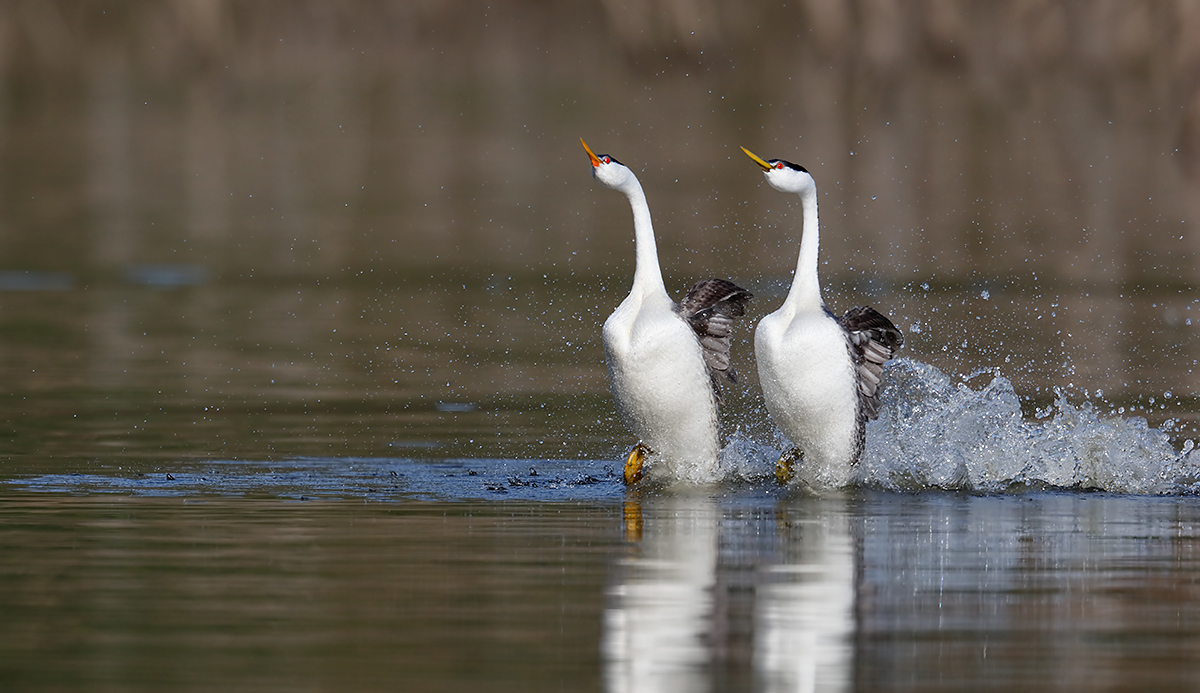
|
|
This image was created in San Diego, CA with the Induro GIT 304L/Mongoose M3.6-mounted Canon EF 500mm f/4L IS II USM lens, the Canon Extender EF 1.4X III, and the simply amazing, astounding, mega mega-pixel Canon EOS 5DS R. ISO 500. Evaluative metering -2/3 stop: 1/2500 sec. at f/6.3 in Av mode. AWB.
61-Point (Automatic selection)/AI Servo/Shutter Button AF as originally framed was active at the moment of exposure (as is always best when photographing moving subjects). Though the optimized image above was a healthy crop from the original the result was a high quality 148+ MB 16-bit file. Click on the image to see a larger version. The AF system selected two AF points, one above the other, between the two birds;the eye of the bird on our right is razor sharp.
Clarke’s X Western Grebe courtship rush
|
The Dancing Grebes Add-On. FRI JAN 25, 2019: $399.
Those registering for the 2019 San Diego IPT might wish to join me for the Dancing Grebe Add-On Morning as above. Please read the details carefully. You will need to wade at least mid-thigh deep with your tripod over an uneven bottom. Lightweight chest waders are advised. Long lenses are needed; a 100-400 will not cut it at this spot, even with a TC. Chances at this location (easily accessible from the IPT hotel), vary from day to day so there will be no guarantees. But when those grebes dance, it can be an amazing rush. We may also enjoy chances to photograph both species, Western and Clarke’s Grebes, at fairly close range.
Help Support the Blog
Please help support my efforts here on the blog by remembering to click on the logo link above each time that you shop Amazon. That would be greatly appreciated. There is no problem using your Prime account; just click on the link and log into your Prime account. With love, artie
If In Doubt …
If in doubt about using the BAA B&H affiliate link correctly, you can always start your search by clicking here. Please note that the tracking is invisible. Web orders only. Please, however, remember to shoot me your receipt via e-mail.




Please Remember to use my Affiliate Links and to Visit the New BAA Online Store 🙂
To show your appreciation for my continuing efforts here, we ask, as always, that you get in the habit of using my B&H affiliate links on the right side of the blog for all of your photo and electronics purchases. Please check the availability of all photographic accessories in the New BIRDS AS ART Online Store, especially the Mongoose M3.6 tripod head, Wimberley lens plates, Delkin flash cards and accessories, and LensCoat stuff.
As always, we sell only what I have used, have tested, and can depend on. We will not sell you junk. We know what you need to make creating great images easy and fun. And please remember that I am always glad to answer your gear questions via e-mail.
I would of course appreciate your using our B&H affiliate links for all of your major gear, video, and electronic purchases. For the photographic stuff mentioned in the paragraph above, and for everything else in the new store, we, meaning BAA, would of course greatly appreciate your business. Here is a huge thank you to the many who have been using our links on a regular basis and those who will be visiting the New BIRDS AS ART Online Store as well.
Facebook
Be sure to like and follow BAA on Facebook by clicking on the logo link upper right. Tanks a stack.
Typos
In all blog posts and Bulletins, feel free to e-mail or to leave a comment regarding any typos or errors. Just be right :).
|
|





